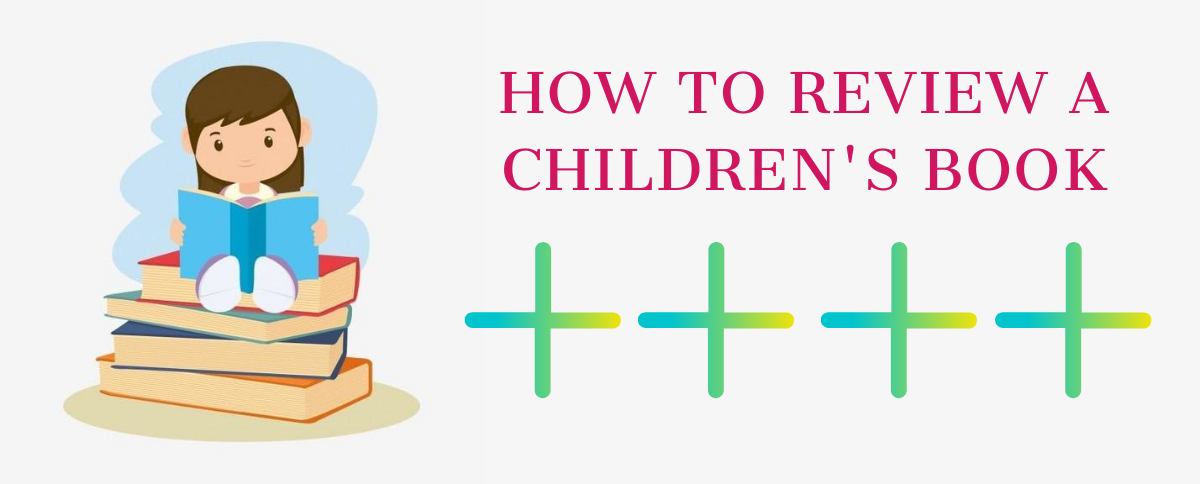Reviewing children’s books is as much fun as it is reading it to a child. Although generally short, they do involve a lot of illustrations loaded with meaning and impact for children.
In order to review a children’s book one must follow a clear line of thinking and rules to properly evaluate the value of each reading.

HOW TO REVIEW A CHILDREN’S BOOK?
SELECTION
Books can be categorized into the following:
- book for infants,
- toddlers,
- pre-schoolers,
- school going children – pre teenagers
- and teenagers
Select the age group with which you most relate and put yourself in the shoes of the audience allowing you to better understand the purpose and intent of the writing.
Before you start your reading session, let your child have a look and feel of the book. This applies to infants and toddlers also. You will come to know what pages in the book really fascinate the child.
WRITING ABOUT THE PLOT
Be careful to not reveal the entire story to the audience by giving away the plot. Describe in a few sentences what the book is about but avoid writing major details of the events which take place in the book.
IMPORTANCE OF ILLUSTRATIONS
Illustrations play a very important role in a children’s book. Children get fascinated by seeing bright and beautiful pictures, they remember the book more because of the pictures that they see in the book. While writing a review, describe the illustrations clearly. Mention the name of the illustrator and give credit to him/her. Talk about some particular illustration which your child really liked. Explain how illustrations connect to the story.

STRENGTHS AND WEAKNESSES OF THE BOOK
Always remember not to be too harsh. Focus on the strengths of the reading after which you may subtly critique portions which you feel need more work. This allows the reader as well as the writer to better understand your review and accept constructive criticism. Being very hash about a book can leave a bad impression on the publishers if they read your review and even the audience might find you as a rude reviewer.
DISCUSSIONS WITH YOUR CHILD
Make sure to divulge any useful discussions which you have with your child during the reading. It is essential to understand the child’s point of view. Sometimes children may relate the story with other topics which readers might find useful.
ACTIVITIES RELATED TO THE BOOK
Try and write about different activities which the audience can do with their children after reading the book. You can relate the story to a lot of different subjects like:
- After reading Alice in Wonderland, have a pretend tea party with your child.
- Explain the concepts of big-small, hot-cold after reading Goldilocks and the Three Bears story.
- After reading The Little Red Riding Hood story, explain how dangerous it can be to talk to strangers.
- Give a colouring worksheet to your child after reading The Lion King.
- After reading books related to animals, talk about different animals: pet, domestic and wild, their young ones and their homes.
- Beautiful finger print insects can be made after reading insects book.
AGE APPROPRIATENESS
Always mention the age group which the book caters to.
AVAILABILITY OF THE BOOK
Give the details from where people can buy the book. If it is available on Amazon or Flipkart, mention the link.
ABOUT THE AUTHOR
Always end your review by writing a few lines about the author. Sometimes, author information is given at the back of the book. In case it is not mentioned at the back of the book, check on Wikipedia and if the author’s mail id or social media handles are available then definitely mention those too. This leaves a very good impression on other authors who read your reviews and you can be approached directly by the authors to review their books too.
BEST PRACTICES AS CHILDREN’S BOOK REVIEWERS
- Mention and tag the names of publishers, author, illustrator and their social media handles in your reviews.
- Post your review on all your social media handles – Facebook, Intsagram, Twitter and blog. The publishers or the authors might see your review and approach you for other book reviews.
- Approach authors and publishers directly. Email them some of your previous reviews and tell them that you are a Children’s book Blogger and would want to review their books.
- Be consistent and review regularly. If you are not regular with reviews then your audience, publishers or the authors do not take you seriously.
- Enjoy writing. Always remember unless you do not enjoy what you write, you can never write well.
Reviewing books and getting to know that someone chose a book based on your review is a rewarding experience. I wish you all the best in your book reviewing journey!







Comments
Nice blogpost